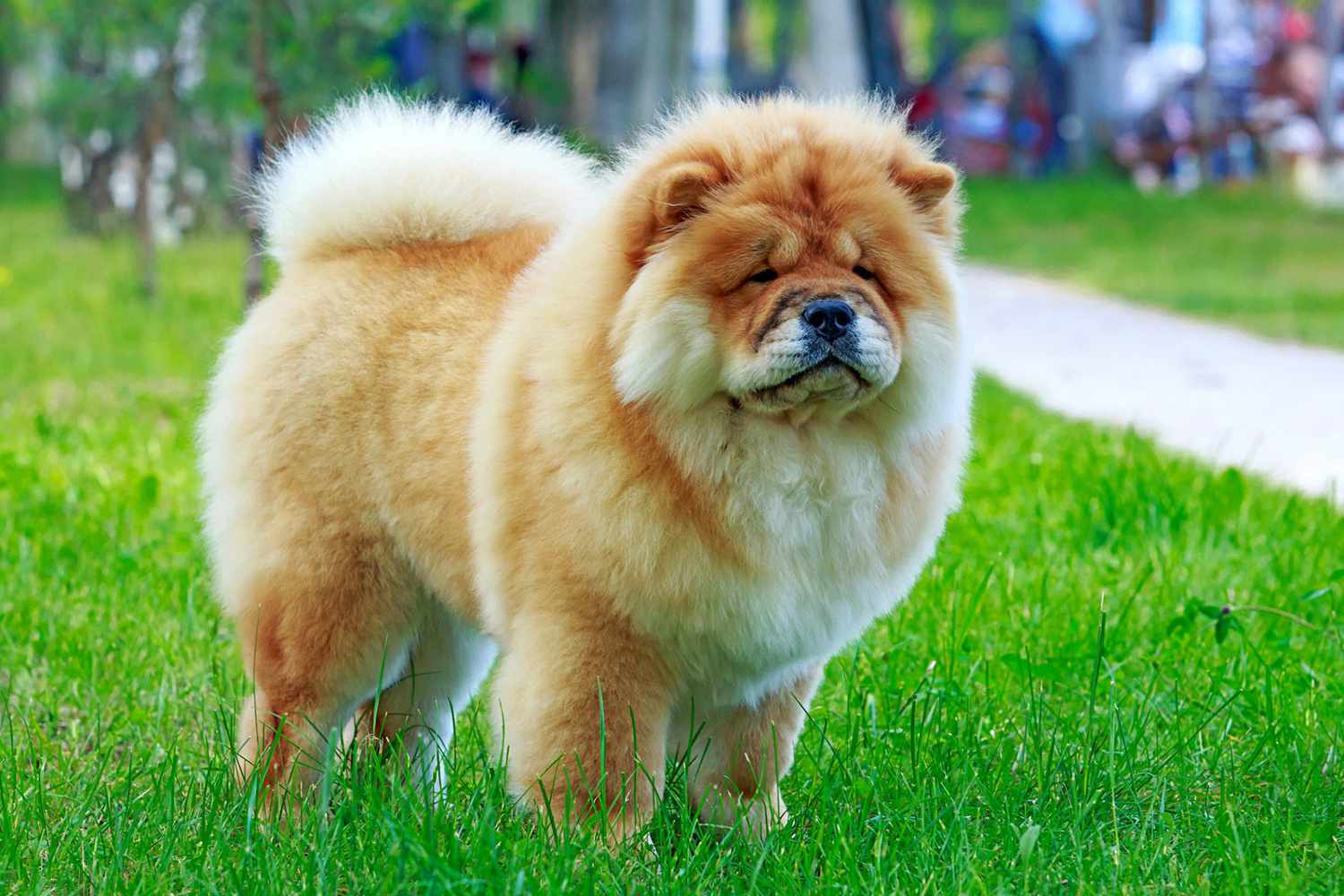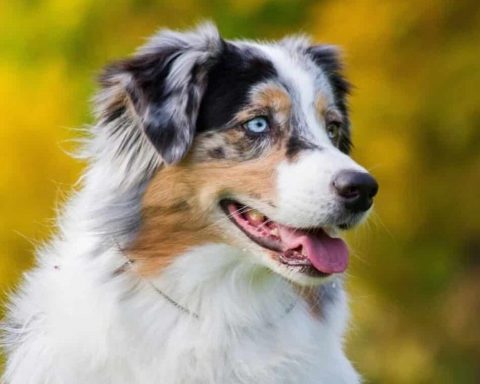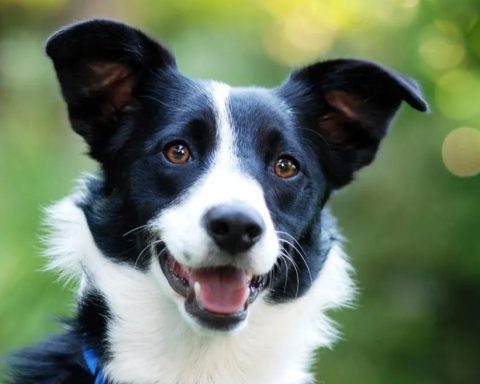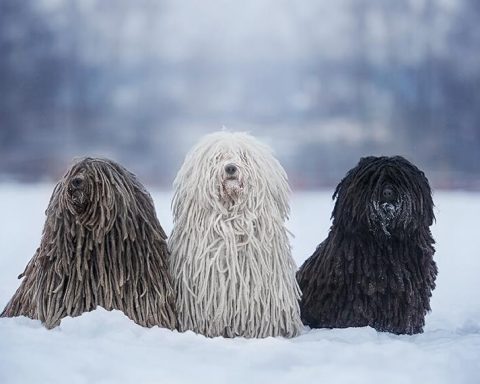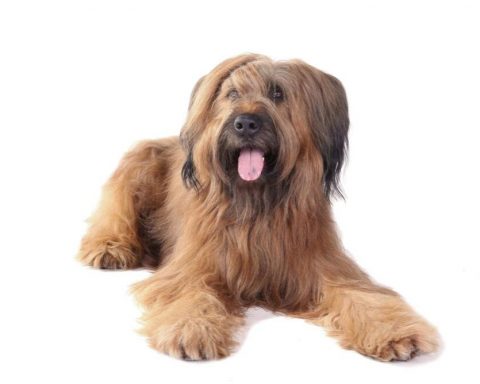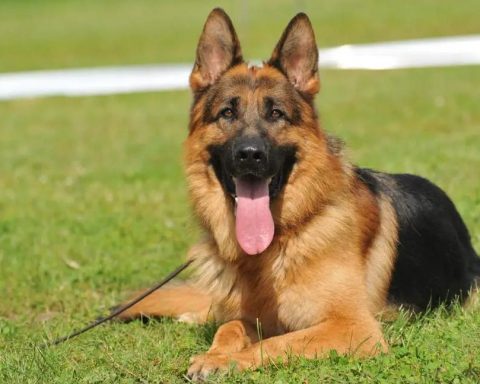summary
Temperament: An ancient breed native to northern China, once used extensively in China as a hunting dog, dragging dog, and guard dog.
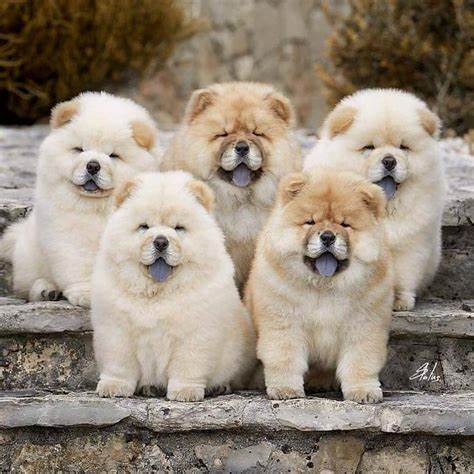
Now it is mainly used as a companion dog.
Strong and robust, with a square body, it is a medium-sized dog, muscular, with thick, strong bones and sufficient bone mass for cold regions and a strong body.
The body is compact, short, broad and deep in the chest, with a high tail root, tail rolled up close to the back, and straight, strong limbs. When viewed from the side, the hind legs are barely noticeably bent, with the knees and hind hocks directly below the hip joints. It is this structure that forms the unique short, dull gait of the Pine Lion.
The head is large, with a broad, flat skull, a wide, deep mouth, a high head, and a beautiful, fringed mane surrounding the head. The elegant body structure requires balance and should not be too large to result in unresponsive or unalert movement.
There are two types of coats: short and rough, both of which are double-coated. The Pine Lion combines beauty, nobility and naturalness with a distinctive blue tongue, a sad expression and a unique gait.
Place of origin
China
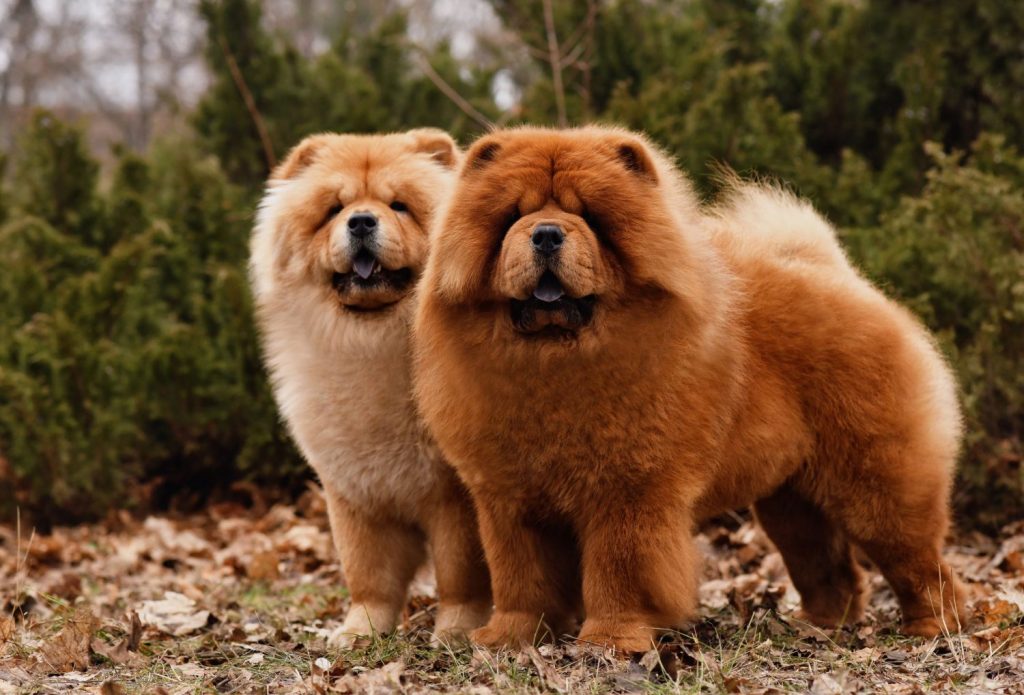
Body type
Size: The average height (at the shoulder) of adult breeds is 17 to 20 inches, however it is the overall proportions that are most important.
Proportions: The body is square and compact when viewed from the side. The distance from forehead to rump is equal to the height of the highest point of the horse’s shoulder rump. If the profile image is not square it is considered a serious defect.
The distance from the tip of the elbow to the ground is equal to half the height of the shoulder. The bottom line of the chest is level with the tip of the elbow.
The body is wide and of equal width from front and rear. For the true loon these proportions are of vital importance.
No deviation from these proportions is allowed when judging a puppy. BODY: A medium sized dog, muscular and strong with large bones. Equally undesirable are breeds with long muzzles, small bones, and overly bulky, blocky bodies.
When comparing the different sexes, set the standard in favor of females, whose heads and bodies may not be able to be as massive as those of males. Bitches give off a soft look compared to the masculinity of males.
Head
The head is held high and is one of the breeds of dogs that have a larger proportion of head, but it should not be exaggerated to the point where it looks top-heavy or unable to hold its head high.
A look of sadness, nobility, dignity, seriousness, calmness and independence. A sad frown is caused by the skin on the forehead wrinkling up in a lump and just inside the upper corner of each eye, creating a frown;
Visible wrinkles between the eyes, extending from the mouth and nose to the forehead; and proper shape and position of the eyes, shape, position and erection of the ears. There must not be an excess of loose skin.
There must be no wrinkles on the mouth or nose. Eyes: Dark brown, deep-set, wide distance between eyes, slanted, medium-sized, almond-shaped. Just the right position and shape form the typical oriental appearance of the Pine Siskin.
The eye rings are black, the lids are neither turned over nor down, and the pupil is clearly visible. Severe defects: lid entropion or ectropion, pupil completely or partially covered by loose skin.
Ears: Small, of medium thickness, triangular but with slightly rounded tips, erect, slightly forward. Located at the top of the skull and well separated. Drooping of one ear during exercise is highly undesirable. Disqualification: one or both drooping ears. A droopy ear is an ear that is broken at any point from root to tip, or is unable to stand up parallel to the top of the skull.
Head: The top of the skull is very broad and flat when viewed from any direction. The coat and loose skin are not a substitute for proper bone structure. From the side, the dorsal line of the muzzle is essentially parallel to the skull. The wrinkles between the eyebrows make the union look a little more abrupt than it actually is. The muzzle is short compared to the top of the skull, but not less than one-third of the length of the head. The muzzle is wide, located below the eyes, and is as wide as it is deep. Proper bone structure, as well as muzzle set-off and cushion-like lips, make up the squared-off appearance of the Pine Siskin. The lining of the muzzle should not be so exaggerated as to detract from the shape of the square head. When the mouth is closed, the upper lip should completely cover the lower lip, but there should be no overhang. Nose: Large, broad, dark, with nostrils noticeably flared. Disqualification: Nose spotted, or obviously not black, with one exception: blue loons may have blue or dark blue-gray noses.
MOUTH AND TONGUE: The lips are black at the edges, most of the mouth tissue is black, and the gums are preferably black. A blue mouth is most desirable. The upper surface and edges of the tongue are dark blue, the darker the color the better. Out of Character: The upper surface and edges of the tongue are red or pink, or have red or pink spots.
Teeth are strong and sturdy with a clipped bite.
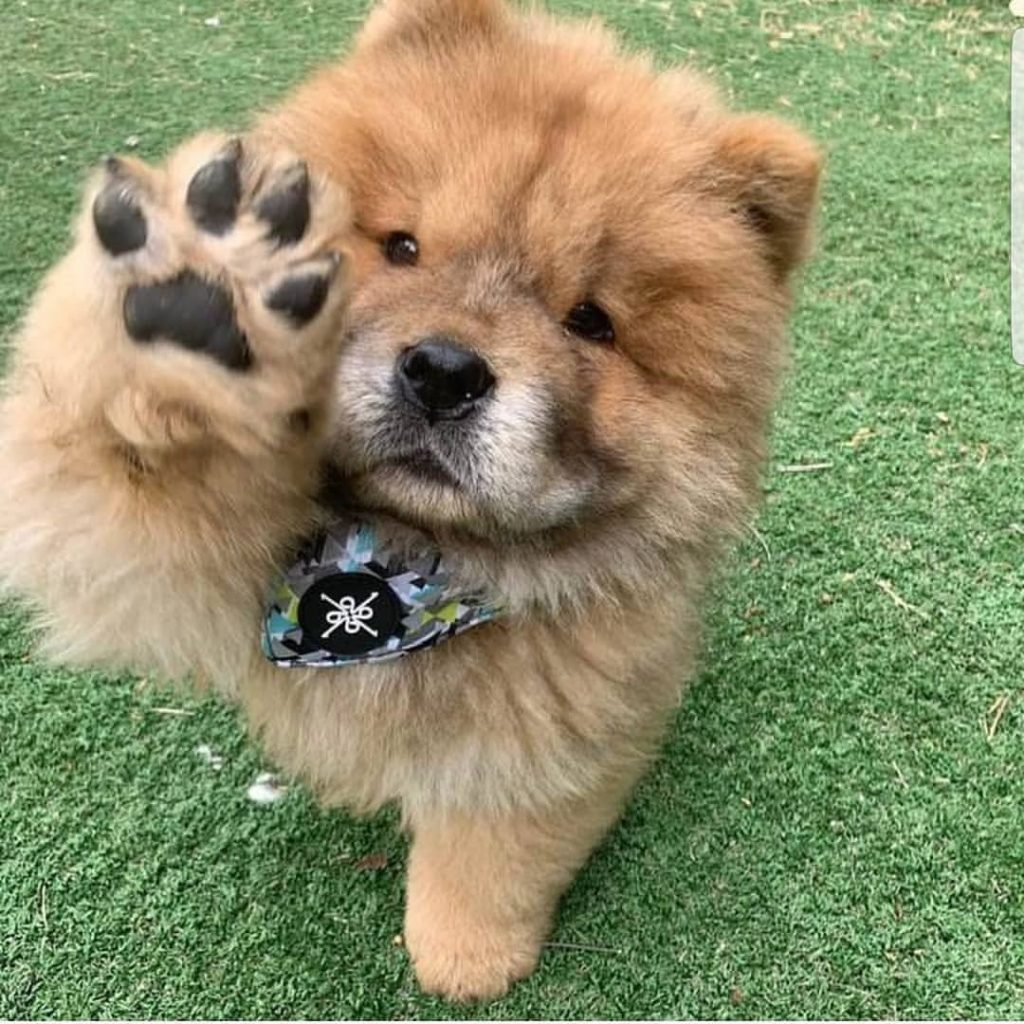
Neck, dorsal line, body
Neck: Strong, full, well-muscled, with a graceful arched neck that is long enough to allow the dog to hold its head above the dorsal line when standing at attention. The backline is straight, strong and level from the withers to the root of the tail.
Body: Short, firm, muscular, broad, deep and relaxed at the withers. Body, back, loin and hips must be short to maintain a square shape.
The chest is broad, deep and well muscled; a narrow and flat chest is unacceptable. The ribs are tightly closed and nicely arched, not barrel shaped. The curvature of the front ribs narrows at the lower end, allowing the shoulders and upper arms to articulate smoothly and close to the chest wall. The base of the chest is wide and deep, extending down to the tips of the elbows. The tip of the sternum is almost directly in front of the shoulder cape.
The loins are muscular, strong, short, broad and deep.
The rump is short and wide, with strong tail and thigh muscles, flush with the rump. Tail root high, rolled up close to the back. Attached to the spine.
Severe defects: heavy or abnormal breathing (excluding normal panting), narrow or flat chest.
Forequarters
Strong, muscular shoulders with complete closure of the tips of the shoulder blades. The shoulder line forms an angle of about 55° with the horizontal and about 110° with the forearm, allowing the forelegs to be under-extended. The upper arm cannot be shorter than the length of the scapula. The elbow joint is lateral to the chest wall and the elbow cannot be turned inward or outward. The front legs are straight from the elbow to the foot, with thick bones, but in proportion to the rest of the dog’s body.
When viewed from the front, the front legs are parallel and well separated, in proportion to the broad front chest. The ankles are short and straight. The loin must not collapse. Wolf fingers can be removed. The foot claws are round, compact, standard cat claws, with thick pads of flesh on the toes, standing firm
Hindquarters
The hindquarters are wide, strong and powerful, with well-muscled hips and thighs, thick bones, and about the same weight of bone in front and behind. The legs are straight and well separated when viewed from behind, in proportion to the broad pelvis. The knee joints are barely angled, the joints are tight and stable, the tips pointing squarely back, and the bones of the joints are well-proportioned and pronounced. The fly joint is relaxed and almost straight. Fly.
joint must be strong, with a tight, firm joint that cannot bend, or twist. The fly and hind tarsus lie in a straight line below the hip joint.
The hind hock is short and at right angles to the ground. The upper claw may be removed. Foot claws are standardized as before. Serious defects: the knee and fly joints are unsound.
Coat
There are two types of coat: coarse and short. Both should have a double coat.
Coarse Coat: In the case of a coarse coat, the cloak of hairs is abundant, dense, flat, not prominent, and the hair layer is close to the body. Surface hairs are straggly; undercoat is soft, dense, and resembles wool. In small dogs the coat is soft, dense, and resembles wool all over the body. The coat forms a thick, fringe-like mane around the head and neck, framing the loon’s head. Male dogs generally have longer coats and fringes than females. The tail coat is feathered. Obvious grooming is not acceptable. Beards, feet, and rear hock sections may be trimmed.
SHORT-HEADED: The short-haired Pine Siskin is determined by essentially the same criteria as the rough-haired Pine Siskin, except for the amount and distribution of the outer coat. The Short-haired Pine Lion has a hard, dense, smooth outer coat and a well-defined inner coat. There should be no visible fringe or feathery hair on the legs or tail.
Color
Net colored, solid or fringed, tail and tips of hair with slight dark spots of solid color.
Pine martens come in five colors: red (light golden to reddish brown), black, blue, cinnamon (light yellow to dark cinnamon) and cream.
All of these colors are acceptable for loons and they are judged on the same criteria.
Gait
The correct gait is neat and powerful. It must be athletic, walk in a straight line, be sensitive, concise, quick, and strong, and not look awkward. Because of the straight back half, the gait of the hind legs is short and less natural.
This distinctive unnatural gait can be easily seen from the side. The rear leg moves upward and forward, maintaining a straight, pendulum-like line with a slight bounce of the hips, and the leg is neither too far back nor too far forward. The rear foot thrusts strongly, and the smallest angular movement of the rear leg transmits power to the body in a straight line. In order to transmit this power to the front of the body with maximum efficiency, the torso must be short and there must be no bulge in the middle section.
When viewed from behind, the line of the bones from the hip joints to the meaty toes can be maintained in a straight line during the movement. The back leg tilts inward slightly as the speed increases. The knee must point in the direction of the movement, not outward, creating a bent leg or tripping. From the front, the line of bones from the shoulder joint to the meaty toe holds a straight line during movement. As the solo accelerates, the front leg movement cannot remain completely parallel; instead, it will tilt slightly inward. The movement of the front leg cannot be in a semicircle, or in a small mincing step, or in a shuffling gait. The front and rear parts of the body must be dynamically balanced. The Pine Siskin is not fast enough, but has excellent endurance, which relies on the direct and effective power provided by the straight and powerful hind legs.
Temperament
Very intelligent, with an independent personality and an innate nobility that makes the Pine Lion seem unapproachable. The Pine Lion is reserved by nature and is perceptive to strangers. Aggressive tendencies and displays of timidity are not acceptable. Due to its deep-set eyes, the Pine Lion has a limited range of vision and is best approached within this range.
Summarize
Defects should be judged according to the extent to which they deviate from the above criteria. Overall structure is the basic basis for consideration when evaluating a loonie. Any feature that is so exaggerated that the body is unable to maintain balance or stability is considered a serious defect. Categories should include general appearance, character, coordination of parts, and stability, especially during movement. The necessary emphasis should be placed on movement, which is the ultimate criterion for judging the construction, balance, and steadiness of the Pine Siskin.
Disqualification
Single or two droopy ears. The presence of droopy ears is defined as a break from the base of the ear to a point at the tip, or an ear that does not stand upright but is parallel to the top of the skull. The nose appears spotted or is clearly not black, except for the blue loonie, which may be dark blue or dark blue-gray. The upper surface or edge of the tongue is red or pink, or has one or more red or pink spots.
Standard Adoption Date: November 11, 1986
Standard Revision Date: August 21, 1990
